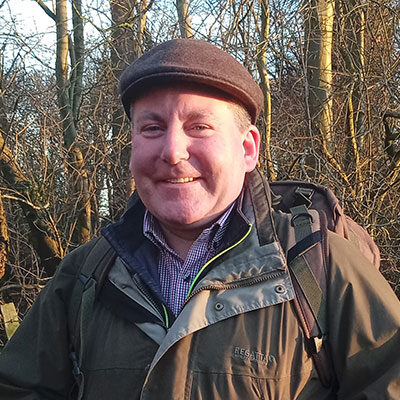What future for National Parks?

Conor O'Gorman
Conor O’Gorman has worked in a variety of conservation, policy and campaigning roles at BASC over the last 16 years. A zoology graduate with a PhD awarded for grey partridge research, he has over 25 years’ experience in conservation and land management.
BASC’s Dr Conor O’Gorman looks at the government’s proposals to ‘improve’ England’s National Parks and Areas of Outstanding Natural Beauty.
Close your eyes and think of memories of navigating the watery wilderness of the Broads, capturing a glimpse of Exmoor’s wild ponies, exploring the huge expanse of the Lake District and the scents and sounds of a summer’s purple haze on the North York Moors.
England has ten National Parks and 34 Areas of Outstanding Natural Beauty (AONB) and whilst these are lovely and memorable places to visit, the role that landowners and land managers play in protecting the special features of these areas is often overlooked.
However, changes are afoot for these areas, as government proposals have been published, detailing a myriad of promises including boosting biodiversity, improving public access and rural transport, improving mental and physical wellbeing, supporting local economies and encouraging sustainable tourism.
The proposals have received mixed views
The Country Land and Business Association is concerned that the government’s approach is “viewing the countryside purely through an environmental lens” and “missing out on significant economic and social opportunity”.
The RSPB welcomed the headline announcement on a stronger focus on recovering nature but that “the government will need to go further and faster, and bring forward legislation to achieve these changes”.
Greater support for public access did not go far enough according to user groups such as The Ramblers and British Canoeing.
So, what about shooting?
To answer that let’s go back to 2018 when the Derbyshire-based writer and journalist Julian Glover was tasked with heading up an independent review of National Parks and AONBs.
BASC responded to the review with evidence of the positive social, economic and environmental benefits of shooting in these areas, which cover 24% of England.
Target shooting, wildfowling, game shooting, deer stalking and all manner of pest and predator control activities take place in some or more of these areas.
Shooting has helped make our National Parks and AONBs the wonderful wild places they are today. Shooting continues to play a vital role, not only in protecting these landscapes and the wildlife within them but providing massive social and economic benefits for local communities living there.
In 2016, a Campaign for National Parks survey highlighted the public’s support of shooting as a recreational activity, when it came in as the third favourite activity out of a list of 23 currently taking place within the Parks.
And so, it was rather surprising that two years later, during the 2018 Glover review, the Campaign for National Parks sought to criticise the shooting community and called for the licensing of grouse moors. The report concentrated very much on the upland National Parks and focused on the illegal trapping, poisoning and killing of birds of prey, not to mention blaming shoots for the loss of curlews and other ground nesting birds.
In fact 90% of English grouse moors fall within a National Park or AONB. The net result is time, effort and millions of pounds of private investment into moorland management, supporting also biodiversity, rural economies and communities and the ecosystem services that the uplands deliver for public good.
The Glover review
So, it was interesting that when the outcome of the Glover review was published in 2019, on shooting it stated the following:
“Moors are a feature of many National Parks and AONBs and many are managed for shooting. In the course of this review, we have been left in no doubt about the controversy this causes. This is not the place to set out a firm answer here. We respect the passion on both sides but note that both have one interest at heart: healthy moors, with good biodiversity.”
“Well-managed moors can achieve that and overcome past mistakes such as the draining of uplands, mostly encouraged not by grouse management but by government. We shouldn’t blame all failings on shooting interests, but nor can that excuse owners and managers from bad management or the lack of species which one would expect to see in the upland landscape. A balance is the way forward. Partnership and compromise should allow land to work for nature, without conflict with people.”
Given the popularity of shooting in National Parks and AONBs and its significant positive impact, it was disappointing that the government’s report published last week did not even give our activities a mention.
BASC will be responding to the public consultation to ensure that the current and future role of shooting in our National Parks and AONBs is both recognised and supported.
Have your say
Click here to have your say on the proposals
If there is a particular point you would like BASC to make in its consultation response click here to email Conor your feedback.
Want to read more blogs?
Head to our Offbeat pages here.
